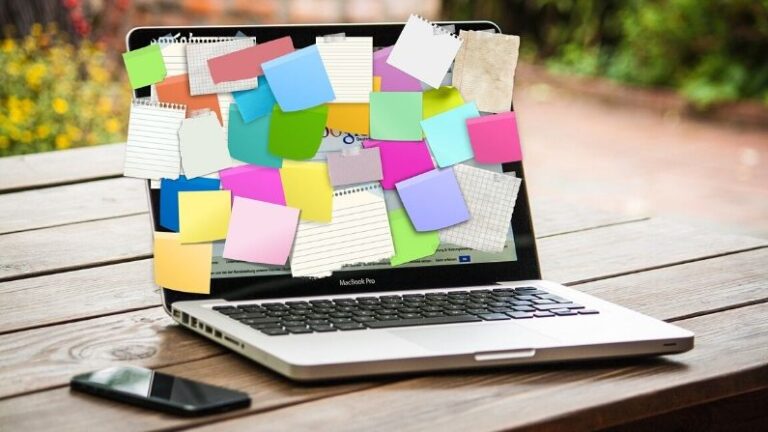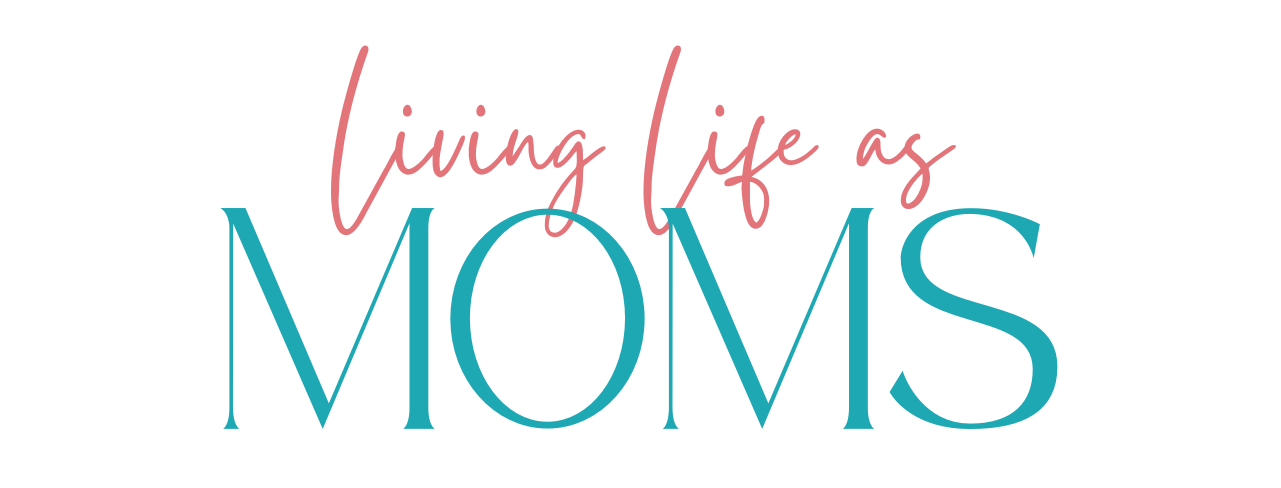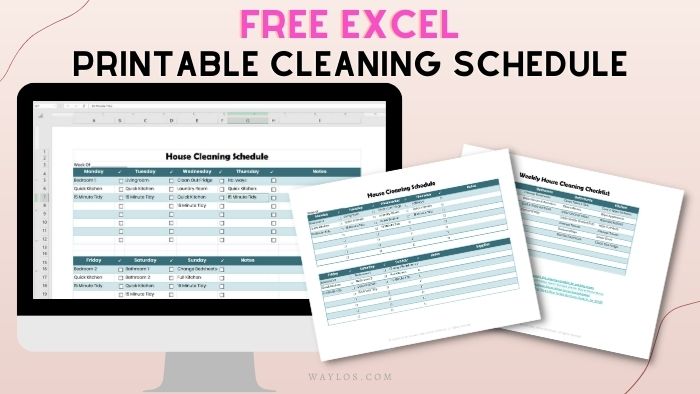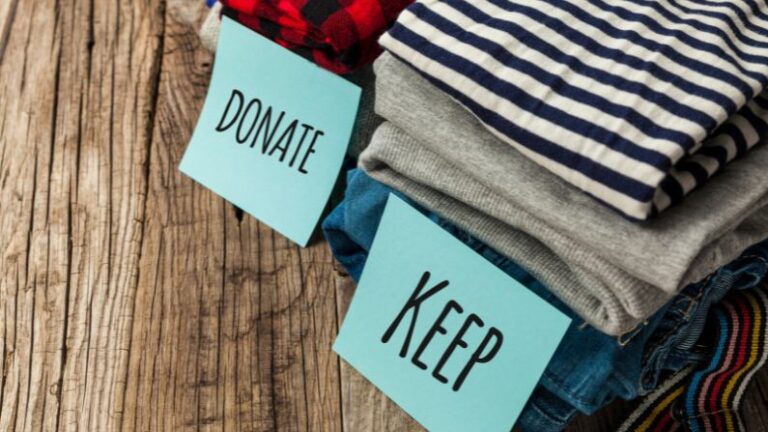How Can I Organize My Paperwork At Home?

[et_pb_section fb_built=”1″ _builder_version=”4.16″ custom_padding=”54px|0px|0|0px|false|false” global_colors_info=”{}”][et_pb_row _builder_version=”4.16″ custom_padding=”27px|0px|0|0px|false|false” global_colors_info=”{}”][et_pb_column type=”4_4″ _builder_version=”4.16″ custom_padding=”|||” global_colors_info=”{}” custom_padding__hover=”|||”][et_pb_text _builder_version=”4.16″ text_font=”Georgia||||||||” text_text_color=”#000000″ text_font_size=”19px” ul_font_size=”19px” ul_line_height=”1.6em” ol_font_size=”19px” ol_line_height=”1.6em” header_font=”Georgia||||||||” header_2_font=”Georgia||||||||” header_2_text_color=”#cc1c9a” header_2_font_size=”28px” header_2_line_height=”1.6em” header_3_font=”Georgia||||||||” header_3_text_color=”#cc1c9a” header_3_line_height=”1.6em” global_colors_info=”{}”]
One of the easiest messes that can be made is a pile of unorganized paperwork. I’ve been guilty of letting mail and coupons pile up, forgetting to check for due dates or deadlines until it’s too late. To stop this from happening, how can I organize my paperwork at home?
Paper clutter usually happens when we don’t have a system or method in place to handle it. We can organize our paperwork at home by taking intentional steps to remove the paper we don’t need, and create a neat and tidy system to keep the documents we DO need.
Let’s look into how we can organize our paperwork at home, and what steps you can take now to keep the paper clutter away.
[/et_pb_text][/et_pb_column][/et_pb_row][et_pb_row column_structure=”1_4,1_2,1_4″ _builder_version=”4.16″ custom_padding=”27px|0px|0|0px|false|false” global_colors_info=”{}”][et_pb_column type=”1_4″ _builder_version=”4.16″ custom_padding=”|||” global_colors_info=”{}” custom_padding__hover=”|||”][/et_pb_column][et_pb_column type=”1_2″ _builder_version=”4.16″ custom_padding=”|||” global_colors_info=”{}” custom_padding__hover=”|||”][et_pb_image src=”https://livinglifeasmoms.com/wp-content/uploads/2019/07/How-To-Organize-Paper-Clutter-Organization.png” align_tablet=”center” align_phone=”” align_last_edited=”on|desktop” _builder_version=”4.16″ global_colors_info=”{}”][/et_pb_image][/et_pb_column][et_pb_column type=”1_4″ _builder_version=”4.16″ custom_padding=”|||” global_colors_info=”{}” custom_padding__hover=”|||”][/et_pb_column][/et_pb_row][et_pb_row _builder_version=”4.16″ custom_padding=”27px|0px|0|0px|false|false” global_colors_info=”{}”][et_pb_column type=”4_4″ _builder_version=”4.16″ custom_padding=”|||” global_colors_info=”{}” custom_padding__hover=”|||”][et_pb_text _builder_version=”4.16″ text_font=”Georgia||||||||” text_text_color=”#000000″ text_font_size=”19px” ul_font_size=”19px” ul_line_height=”1.6em” ol_font_size=”19px” ol_line_height=”1.6em” header_font=”Georgia||||||||” header_2_font=”Georgia||||||||” header_2_text_color=”#cc1c9a” header_2_font_size=”28px” header_2_line_height=”1.6em” header_3_font=”Georgia||||||||” header_3_text_color=”#cc1c9a” header_3_line_height=”1.6em” global_colors_info=”{}”]
How to Organize Paperwork at Home
Step 1: Remove The Paper We Don’t Need
First thing’s first: shred or recycle the paper you don’t need anymore.
To Shred: any papers with your name, address, social security number, account numbers, etc.
To Recycle: everything else that can be recycled. Check with your town’s recycling service to get a list.
Where to start? Start with the obvious stuff:
- Old newspapers, magazines and circulars,
- Expired coupons,
- Expired warranty receipts,
- Instruction manuals that can be found online,
- Old artwork from the kids*
*This is a touchy subject. In my family, we keep 1 or 2 art projects a year. For the rest, my kids can decide to take a picture of their art, and we make a big deal about recycling as a happy thing to “turn it into something new.”
I have to tell you, my parents just gave me a big storage box with a bunch of my childhood stuff they kept. It’s a box full of absolute junk! Finger paintings, some random school notebook from 3rd grade, a yearbook from elementary school, a colored-in coloring book….I was happy to thank them, and toss it the next day.
I think that keeping the kids in on the decisions (to a point) and giving them practice to decide what’s really important and makes them happy, is a good teaching experience.
More important paperwork and documents are next, and can normally fall into one of three categories:
- Life documents, that we keep for ourselves and our families,
- Documents that we keep for tax purposes, and
- Day-to-day documents and papers that we may need for basic record-keeping, but usually only temporarily.
Suze Orman has a thorough list of what papers to keep, and for how long. Here’s a chart I made for reference:
[/et_pb_text][/et_pb_column][/et_pb_row][et_pb_row _builder_version=”4.16″ global_colors_info=”{}”][et_pb_column type=”4_4″ _builder_version=”4.16″ global_colors_info=”{}”][et_pb_image src=”https://livinglifeasmoms.com/wp-content/uploads/2020/04/What-To-Keep-When-To-Toss-Chart.jpg” _builder_version=”4.16″ global_colors_info=”{}”][/et_pb_image][/et_pb_column][/et_pb_row][et_pb_row _builder_version=”4.16″ global_colors_info=”{}”][et_pb_column type=”4_4″ _builder_version=”4.16″ global_colors_info=”{}”][et_pb_text _builder_version=”4.16″ text_font=”Georgia||||||||” text_text_color=”#000000″ text_font_size=”19px” ul_font_size=”19px” ul_line_height=”1.6em” ol_font_size=”19px” ol_line_height=”1.6em” header_font=”Georgia||||||||” header_2_font=”Georgia||||||||” header_2_text_color=”#cc1c9a” header_2_font_size=”28px” header_2_line_height=”1.6em” header_3_font=”Georgia||||||||” header_3_text_color=”#cc1c9a” header_3_line_height=”1.6em” global_colors_info=”{}”]
A major step in removing paper we don’t need is to consider going paperless, ONLY if you are able to retrieve statements online or through whatever company you got the statement from.
Receiving paperless statements instead of paper statements makes far less physical mess, but it can certainly clog up your computer’s file folders, or your email inbox. If you decide to download each statement onto your computer, make subfolders for them, and remember to save them with a detailed file name, so you can easily search for them later.
You can also create email sub-folders, to make retrieving specific documents super-easy from your inbox.
Now that you have only the papers you DO need, where do you keep them? Let’s check that out in the next step…
[/et_pb_text][/et_pb_column][/et_pb_row][et_pb_row _builder_version=”4.16″ global_colors_info=”{}”][et_pb_column type=”4_4″ _builder_version=”4.16″ global_colors_info=”{}”][et_pb_text _builder_version=”4.16″ text_font=”Georgia||||||||” text_text_color=”#000000″ text_font_size=”19px” ul_font_size=”19px” ul_line_height=”1.6em” ol_font_size=”19px” ol_line_height=”1.6em” header_font=”Georgia||||||||” header_2_font=”Georgia||||||||” header_2_text_color=”#cc1c9a” header_2_font_size=”28px” header_2_line_height=”1.6em” header_3_font=”Georgia||||||||” header_3_text_color=”#cc1c9a” header_3_line_height=”1.6em” global_colors_info=”{}”]
Step 2: Create a Filing System
Organizing years of old paperwork can be daunting, but once it’s done, it’s done.
Plus, now that you have pared down your documents to only what you MUST keep, we can easily get it all into tidy, manageable areas and you’ll never have to worry about losing anything.
We will set up a simple home filing system to hold these papers for you. First we’ll go through options for the supplies needed, then how to actually organize the papers….
Paper Holders/Storage:
Storing documents at home doesn’t have to be big and bulky. There are so many options for holding papers, depending on how much space you have:
- Filing cabinet,
- File box,
- An accordion folder,
- Even a magazine holder,
- Or just one, or a few, binders
If you have some usable space already, like a home office, one drawer in a filing cabinet, or a pretty file box, will be perfect.
If your space is on the smaller side and you’re looking at using a closet, cabinet or bookshelf, an accordion folder, magazine holder or a few binders will be perfect.
(I really like Target for binders, they have more stylish options than Staples or other office supply stores. Sometimes Zazzle has pretty options too, and they are usually running a coupon code.)
[/et_pb_text][/et_pb_column][/et_pb_row][et_pb_row _builder_version=”4.16″ global_colors_info=”{}”][et_pb_column type=”4_4″ _builder_version=”4.16″ global_colors_info=”{}”][et_pb_text _builder_version=”4.16″ text_font=”Georgia||||||||” text_text_color=”#000000″ text_font_size=”19px” ul_font_size=”19px” ul_line_height=”1.6em” ol_font_size=”19px” ol_line_height=”1.6em” header_font=”Georgia||||||||” header_2_font=”Georgia||||||||” header_2_text_color=”#cc1c9a” header_2_font_size=”28px” header_2_line_height=”1.6em” header_3_font=”Georgia||||||||” header_3_text_color=”#cc1c9a” header_3_line_height=”1.6em” global_colors_info=”{}”]
Dividers:
So, now you need a way to separate the papers into categories:
- Tabbed File folders – I love these for filing cabinets and file boxes. They can be as plain as these, or as glam as these! Totally up to you.
- Tabbed Binder dividers – these are great for magazine holders, and obviously binders. If you are using binder dividers for standing magazine holders, try to get ones with a sturdier paper, or just make your own with the next option….
- Sticker Tabs – it’s easy to make DIY dividers with a piece of leftover cereal box and a sticker tab. Also, if you are going with the accordion folder option, sometimes they come with built-in tabs, but if not, you can throw some sticker tabs right on there.
So, we have a place to hold paper, and we have a way to separate it. On to organizing your new easy filing system…..
[/et_pb_text][/et_pb_column][/et_pb_row][et_pb_row column_structure=”1_4,1_2,1_4″ _builder_version=”4.16″ global_colors_info=”{}”][et_pb_column type=”1_4″ _builder_version=”4.16″ global_colors_info=”{}”][/et_pb_column][et_pb_column type=”1_2″ _builder_version=”4.16″ global_colors_info=”{}”][et_pb_image src=”https://livinglifeasmoms.com/wp-content/uploads/2020/04/20200420_010003.gif” align=”center” _builder_version=”4.16″ global_colors_info=”{}”][/et_pb_image][/et_pb_column][et_pb_column type=”1_4″ _builder_version=”4.16″ global_colors_info=”{}”][/et_pb_column][/et_pb_row][et_pb_row _builder_version=”4.16″ global_colors_info=”{}”][et_pb_column type=”4_4″ _builder_version=”4.16″ global_colors_info=”{}”][et_pb_text _builder_version=”4.16″ text_font=”Georgia||||||||” text_text_color=”#000000″ text_font_size=”19px” ul_font_size=”19px” ul_line_height=”1.6em” ol_font_size=”19px” ol_line_height=”1.6em” header_font=”Georgia||||||||” header_2_font=”Georgia||||||||” header_2_text_color=”#cc1c9a” header_2_font_size=”28px” header_2_line_height=”1.6em” header_3_font=”Georgia||||||||” header_3_text_color=”#cc1c9a” header_3_line_height=”1.6em” global_colors_info=”{}”]
For the Paperwork You Only Have to Keep For up to ONE Year:
Paperwork Categories:
I actually have TWO very simple ways to organize those day-to-day bills like utilities, credit card & bank statements, etc.
The most common way to organize these documents is by category. The most common categories are:
- Checking Account Statements (and cancelled checks, if they aren’t already electronic)
- Savings Account Statements
- Credit Card Statements
- Personal Home & Miscellaneous Docs – These include quarterly investment statements (only 4 a year), car papers like a car insurance policy, homeowner’s insurance policy……anything that you get once or twice a year that wouldn’t be enough to need its own folder on its own.
- Medical Expenses
- Pay Stubs
Each folder, or divided section, becomes a category. These fill up throughout the year, and once the year is done, you empty the folders, shred the paper that can go, and move the rest to their respective long-term folders (more on that below).
[/et_pb_text][/et_pb_column][/et_pb_row][et_pb_row _builder_version=”4.16″ global_colors_info=”{}”][et_pb_column type=”4_4″ _builder_version=”4.16″ global_colors_info=”{}”][et_pb_image src=”https://livinglifeasmoms.com/wp-content/uploads/2020/04/File-cabinet-folder-categories-for-paper-organization.jpg” _builder_version=”4.16″ global_colors_info=”{}”][/et_pb_image][/et_pb_column][/et_pb_row][et_pb_row _builder_version=”4.16″ global_colors_info=”{}”][et_pb_column type=”4_4″ _builder_version=”4.16″ global_colors_info=”{}”][et_pb_text _builder_version=”4.16″ text_font=”Georgia||||||||” text_text_color=”#000000″ text_font_size=”19px” ul_font_size=”19px” ul_line_height=”1.6em” ol_font_size=”19px” ol_line_height=”1.6em” header_font=”Georgia||||||||” header_2_font=”Georgia||||||||” header_2_text_color=”#cc1c9a” header_2_font_size=”28px” header_2_line_height=”1.6em” header_3_font=”Georgia||||||||” header_3_text_color=”#cc1c9a” header_3_line_height=”1.6em” global_colors_info=”{}”]
The SECOND way is a method I actually got from my daughter. It’s organizing the documents by month.
It’s PERFECT for those of us who don’t have to review our statements often, and don’t regularly need to search through a specific category of papers.
You start with 12 empty folders, one folder for each month of the year. Any statements you get in January go in the January folder, any statements you get in February go in the February folder, and so on.
Once a year passes, you simply take out the papers from the January folder (or whenever you started), and shred them, making room for the new month’s papers. This way, you’ll always have one year of documents!
This is also easy to do in a binder, magazine holder or accordion folder with 12 dividers.
Then, you’ll only need one or two more folders, to hold your pay stubs and medical expenses.
[/et_pb_text][/et_pb_column][/et_pb_row][et_pb_row _builder_version=”4.16″ global_colors_info=”{}”][et_pb_column type=”4_4″ _builder_version=”4.16″ global_colors_info=”{}”][et_pb_text _builder_version=”4.16″ text_font=”Georgia||||||||” text_text_color=”#000000″ text_font_size=”19px” ul_font_size=”19px” ul_line_height=”1.6em” ol_font_size=”19px” ol_line_height=”1.6em” header_font=”Georgia||||||||” header_2_font=”Georgia||||||||” header_2_text_color=”#cc1c9a” header_2_font_size=”28px” header_2_line_height=”1.6em” header_3_font=”Georgia||||||||” header_3_text_color=”#cc1c9a” header_3_line_height=”1.6em” global_colors_info=”{}”]
I have a free Folders checklist to send you, for signing up to my email list. It also includes a checklist for work-related documents, for if you work from home:
[/et_pb_text][/et_pb_column][/et_pb_row][et_pb_row _builder_version=”4.16″ global_colors_info=”{}”][et_pb_column type=”4_4″ _builder_version=”4.16″ global_colors_info=”{}”][et_pb_code _builder_version=”4.16″ global_colors_info=”{}”][/et_pb_code][/et_pb_column][/et_pb_row][et_pb_row _builder_version=”4.16″ global_colors_info=”{}”][et_pb_column type=”4_4″ _builder_version=”4.16″ global_colors_info=”{}”][et_pb_text _builder_version=”4.16″ text_font=”Georgia||||||||” text_text_color=”#000000″ text_font_size=”19px” ul_font_size=”19px” ul_line_height=”1.6em” ol_font_size=”19px” ol_line_height=”1.6em” header_font=”Georgia||||||||” header_2_font=”Georgia||||||||” header_2_text_color=”#cc1c9a” header_2_font_size=”28px” header_2_line_height=”1.6em” header_3_font=”Georgia||||||||” header_3_text_color=”#cc1c9a” header_3_line_height=”1.6em” global_colors_info=”{}”]
For the Paperwork You Have to Keep for THREE Years:
The name of this game is remembering what year you put the paperwork in, so you get rid of the papers you don’t need anymore, in an efficient way.
The way to do this is similar to the second “one-year” method I showed you above (filing papers by month), except that:
- The files are by YEAR instead of Month (Year One, Year Two, and Year Three), and
- Instead of starting the clock in whatever month you are in, you’re going to start the clock on the next new year. You’ll only have to do this once, since you are probably just starting this method in the middle of the year.
So for example, if it is APRIL right now, I’m going to put my new Tax Return in the “Year One” section. Once January comes, I’m going to continue putting any new documents I’m supposed to keep for 3 years into the “Year One” section, through December.
On December 31st, I can move all of those “Year One” papers to the “Year Two” file, so the “Year One” file is empty for when the next January comes.
The reason we are doing this is because it is too much work to have to keep track of every single document every month. So what if you keep a few papers a little bit longer than three years? It’s way worth it, compared to the time you would have to spend tracking the papers every month.
[/et_pb_text][/et_pb_column][/et_pb_row][et_pb_row _builder_version=”4.16″ global_colors_info=”{}”][et_pb_column type=”4_4″ _builder_version=”4.16″ global_colors_info=”{}”][et_pb_text _builder_version=”4.19.2″ text_font=”Georgia||||||||” text_text_color=”#000000″ text_font_size=”19px” ul_font_size=”19px” ul_line_height=”1.6em” ol_font_size=”19px” ol_line_height=”1.6em” header_font=”Georgia||||||||” header_2_font=”Georgia||||||||” header_2_text_color=”#cc1c9a” header_2_font_size=”28px” header_2_line_height=”1.6em” header_3_font=”Georgia||||||||” header_3_text_color=”#cc1c9a” header_3_line_height=”1.6em” hover_enabled=”0″ global_colors_info=”{}” sticky_enabled=”0″]
For the Paperwork you have to keep for LIFE:
I personally keep all of this stuff together in one place. This includes:
- Passports,
- Birth certificates,
- Death certificates
- Social security cards,
- Marriage license,
- Wills,
- Life insurance policies,
- Satisfactions of any secured debt (like a mortgage)
One option is putting these items into a safe in your home. Make sure to invest in one that is fire- and water-proof.
(However, I have a friend whose house was robbed and the safe was stolen. Every original document she had was gone. So, if you want to use a safe, it should be attached to a steel beam in a wall, enormous, or obviously not easily transported.)
Another option, which I prefer to do, is to keep the original papers in an accordion-type plastic file folder with a closable lid, close to an exit in case there is a fire or other emergency.
The originals inside should each be covered with a clear plastic document holder, just in case.
Then, keep copies in a totally different place in your home.
Related: REAL-LIFE Declutter Before & After Pics!
[/et_pb_text][/et_pb_column][/et_pb_row][et_pb_row _builder_version=”4.16″ global_colors_info=”{}”][et_pb_column type=”4_4″ _builder_version=”4.16″ global_colors_info=”{}”][et_pb_text _builder_version=”4.16″ text_font=”Georgia||||||||” text_text_color=”#000000″ text_font_size=”19px” ul_font_size=”19px” ul_line_height=”1.6em” ol_font_size=”19px” ol_line_height=”1.6em” header_font=”Georgia||||||||” header_2_font=”Georgia||||||||” header_2_text_color=”#cc1c9a” header_2_font_size=”28px” header_2_line_height=”1.6em” header_3_font=”Georgia||||||||” header_3_text_color=”#cc1c9a” header_3_line_height=”1.6em” global_colors_info=”{}”]
Step 3: Have a Method for Organizing Paperwork at Home Going Forward
Now that you have a place for everything, it’s time to put your filing system to use.
New paperwork can usually fit into one of these categories:
- Junk: to go into garbage or recycling
- Coupons: needed later
- Bills or Statements: Needed to make payments, or to balance your checkbook
- School notices: like permission slips to sign, events to record in a calendar, etc.
For junk mail, keep a small basket or bag where you usually open your mail, to immediately throw junk mail away.
For coupons, put these directly into your purse. Keep a clear ziploc bag in your car’s glove compartment, and take the coupons out of your bag and into the ziploc bag, whenever you get into your car.
For bills and statements, designate a place in your house, ideally close to your filing cabinet, where you can regularly pay your bills and record your expenses. These papers go there.
Once you are ready to pay your bills, you can easily file the papers away in your folders.
For school notices, the best thing to do is handle these as soon as the kids get home. They are easily lost and forgotten in my experience. Grab your planner* and go through your kids’ folders when they start their homework. Record any important dates, sign any tests or permission slips, pay the field trip fees or whatever, and recycle the paper, right away.
*I suggest you always keep your planner in a place you can easily access it throughout the day. That way, you can open it & write something quickly off of papers or emails you come across, and then toss the paper/archive or delete the email.
[/et_pb_text][/et_pb_column][/et_pb_row][et_pb_row _builder_version=”4.16″ global_colors_info=”{}”][et_pb_column type=”4_4″ _builder_version=”4.16″ global_colors_info=”{}”][et_pb_text _builder_version=”4.16″ text_font=”Georgia||||||||” text_text_color=”#000000″ text_font_size=”19px” ul_font_size=”19px” ul_line_height=”1.6em” ol_font_size=”19px” ol_line_height=”1.6em” header_font=”Georgia||||||||” header_2_font=”Georgia||||||||” header_2_text_color=”#cc1c9a” header_2_font_size=”28px” header_2_line_height=”1.6em” header_3_font=”Georgia||||||||” header_3_text_color=”#cc1c9a” header_3_line_height=”1.6em” global_colors_info=”{}”]
Step 4: Make Organizing Your Papers a Habit
Schedule daily or weekly paperwork organizing. Having a specific time each day, or week, to go through your paperwork will keep it off of your counters (or sticking upwards out of your folder trying to “remind” you that it’s there). Find a time that’s easiest for you, and commit to it.
Implement the “Touch Once” rule. Try to only touch papers and documents once. This means:
- Don’t grab the mail unless you are ready to sit and deal with it for a few minutes.
- Do not file a paper unless you have totally dealt with it (recorded the deadline, made the phone call, etc.).
What’s Your Least Favorite Part About Paper Clutter?
I hope this post helped you organize paperwork at home, so you have a clean, easy and streamlined way to sort paper from now on. Let me know in the comments if you have any paper organizing tips to share!
[/et_pb_text][/et_pb_column][/et_pb_row][/et_pb_section][et_pb_section fb_built=”1″ _builder_version=”4.16″ custom_padding=”0|0px|54px|0px|false|false” global_colors_info=”{}”][et_pb_row _builder_version=”4.16″ custom_padding=”27px|0px|0|0px|false|false” global_colors_info=”{}”][et_pb_column type=”4_4″ _builder_version=”4.16″ custom_padding=”|||” global_colors_info=”{}” custom_padding__hover=”|||”][et_pb_text _builder_version=”4.16″ text_font=”Georgia||||||||” text_text_color=”#000000″ text_font_size=”19px” ul_font=”||||||||” ul_line_height=”1.6em” header_font=”Georgia||||||||” header_2_font=”Georgia||||||||” header_3_font=”Georgia||||||||” global_colors_info=”{}”]
If you liked this post, make sure to leave a comment & Pin it!!!
Checkout my other Blog Posts & be sure to follow me on Pinterest, I have TONS more great content!!
Here are some more posts that might be helpful:
–How To Declutter a Room in 30 Minutes or Less
–How to Organize Your House With One Trip to Target
–5 Super-Easy and Satisfying Weekend Home Organizing Ideas
[/et_pb_text][/et_pb_column][/et_pb_row][/et_pb_section]



